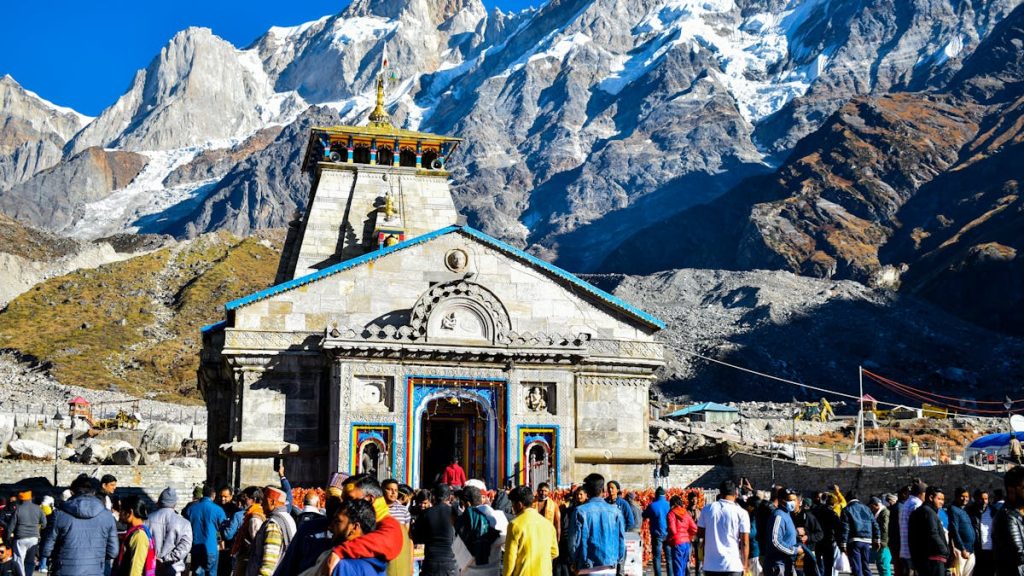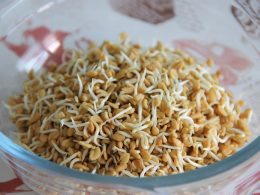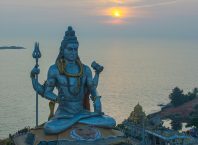Table of Contents
The most famous of the 12 Jyotirlingas (sacred shrines of Lord Shiva), the Kedarnath temple is one of India’s highest and most challenging to reach pilgrimage destinations. The temple is dedicated to Lord Shiva and is believed to have a spiritual significance that grants pilgrims spiritual enlightenment. The architecture of this majestic temple is said to be based on the ashlar technique wherein grey slabs of stone are carefully interlocked with each other without the use of mortar or cement.
This unique style of temple architecture gives the structure an awe-inspiring look as the large and heavy stones are evenly cut and carved into shape to form the intricate temple structure. The temple houses a Garbha Griha for worship and a Mandap, apt for assembly of devotees. It also has a conical rock formation inside that is worshipped as Lord Shiva in his Sadashiva form. A grand statue of Nandi stands outside the temple door as a guard.
Legend has it that after the great Kurukshetra war, the Pandavas went in search of Lord Shiva to seek his forgiveness. However, Lord Shiva was angry with them and disappeared into the Himalayas. He reappeared in five different forms at the sites of his body parts, namely the hump at Kedarnath, his face at Rudranath, his arms at Tungnath, his navel at Madhyamaheshwar, and the locks at Kalpeshwar.
The Kedarnath temple is closed for six months during the winter season which starts right after Diwali when the temperatures drop below zero degrees Celsius. The deity of the temple is brought to Ukhimath and worshipped there until the Kedarnath opens up for darshan again in late April or early May. In the meantime, the linga is given a natural bath in the morning and then a paste of ghee is applied to it before the evening aarti. This is to keep the linga warm during the freezing temperature.

What Is Kedarnath Temple Famous For?
A popular tourist destination amongst Hindu pilgrims, Kedarnath is one of the Char Dham temples and is located at a height of more than 4000 meters. It is also the most important shrine of Lord Shiva in the Garhwal region of Uttarakhand. It is said that the Pandavas built the temple when they sought pardon from Lord Shiva for killing their cousins in a war.
As per mythology, Lord Shiva hid himself in the form of a bull here during the Little Ice Age to protect the local inhabitants. Later on, the Pandavas discovered him and worshipped him. They also rubbed the linga with ghee, which is considered an auspicious gesture.
The morning rituals of the temple start at sharp 4.00 AM with Maha Abhishek followed by Laghu Rudra Abhishek and Shodasopachar Pooja till 7.00 AM. The Sampurna Aarti is held in the evening at 7.00 PM.
Kedarnath is also known for the Shravani Annakoot Mela which is celebrated a day before Raksha Bandhan. This festival is a visual treat with music, art, and color dripping from every corner of the mountainous state of Uttarakhand. During this time devotees visit the temple and offer their harvest in the form of Prasadam to the deity. They also rub the linga with ghee and pour it over the idol as it is an auspicious act. The locals believe that rubbing the linga with ghee will wash away their sins.
What is the History of Kedarnath Temple?
The history of Kedarnath temple dates back to the 8th century. Sage Adi Shankaracharya is credited with establishing the famous Char Dham circuit of pilgrimage destinations in Uttarakhand and Kedarnath is one of its most important shrines. The temple has survived numerous natural disasters and avalanches over the centuries. Despite the hardships, it has undergone several renovations and reconstructions.
According to legend, Pandavas built the temple at Kedarnath as an act of penance for the sins they committed in the Mahabharata war. It is believed that Lord Shiva tried to evade the Pandavas by taking the form of a bull and disappearing into the ground. Only his hump was left visible and hence the temple came into existence.
After the Pandavas recognized the hump of the bull, they sought forgiveness from Lord Shiva. He was pleased with their efforts and granted them a pardon. Later, Lord Shiva appeared in his five different forms – hump at Kedarnath, face at Rudranath, arms at Tungnath, navel at Madhyamaheshwar, and locks at Kalpeshwar.
It is believed that Adi Shankaracharya spent a large part of his life in this holy temple. A Samadhi (memorial) dedicated to him is located right behind the main temple entrance. During the flash floods of 2013, this Samadhi was saved and it is now being rebuilt in an underground chamber. It has become a custom to offer ghee for massaging the triangle Shiva Lingam in this temple as a tribute to the great sage.
FAQs
When Kedarnath temple open in 2024?
Char Dham Yatra 2024
| Char Dham Temples | Opening Date (Tentative) | Closing Date (Tentative) |
|---|---|---|
| Yamunotri | 10 May 2024 | 31 October 2024 |
| Gangotri | 10 May 2024 | 2 November 2024 |
| Kedarnath | 14 May 2024 | 2 November 2024 |
| Badrinath | 16 May 2024 | 9 November 2024 |
Which month is best to visit Kedarnath?
April to June month is best time to visit Kedarnath.
Can I visit Kedarnath in November?
Yes, you can visit Kedarnath in November.
Kedarnath Opening Date 2024
| Char Dham Temples | Opening Date (Tentative) | Closing Date (Tentative) |
|---|---|---|
| Yamunotri | 10 May 2024 | 31 October 2024 |
| Gangotri | 10 May 2024 | 2 November 2024 |
| Kedarnath | 14 May 2024 | 2 November 2024 |
| Badrinath | 16 May 2024 | 9 November 2024 |














